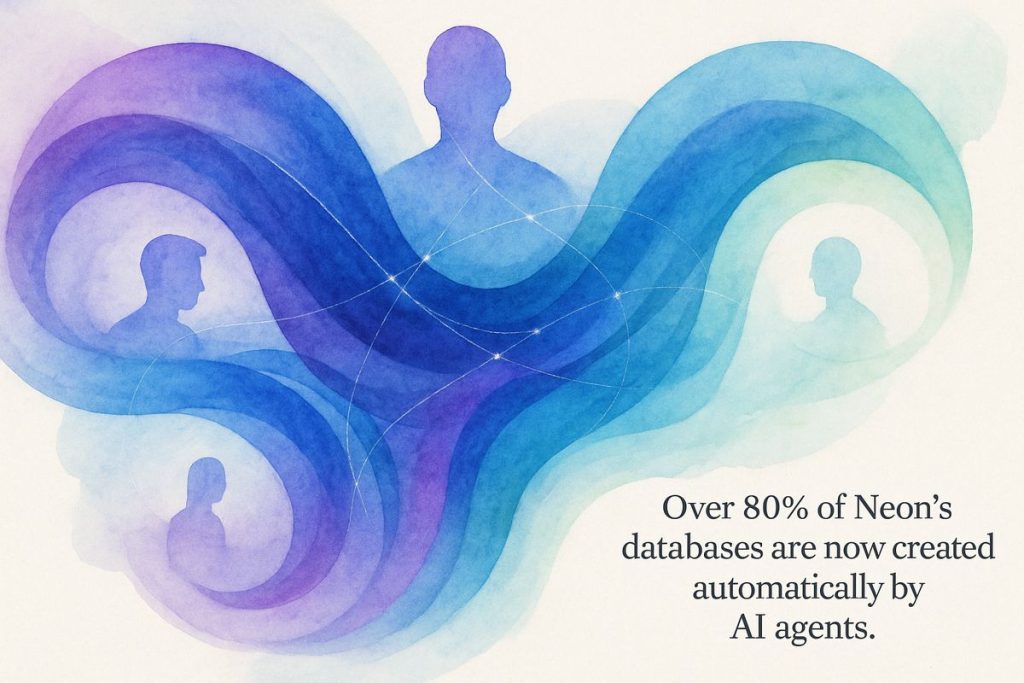Databricks bought Neon, a fast and smart serverless Postgres database, to make their data platform even better for AI and analytics. Now, companies can mix real-time data, deep analysis, and automation all in one place—like kitchen gadgets working together perfectly. Neon’s cool trick is making database copies instantly, so testing and scaling are easy and quick. This move lets developers use their favorite open-source Postgres tools with Databricks, opening up big possibilities for businesses and data lovers everywhere.
What does Databricks’ acquisition of Neon mean for the future of databases and AI?
Databricks’ acquisition of Neon brings serverless, AI-native Postgres to its analytics platform, enabling seamless integration of transactional, analytical, and AI workloads. This unlocks instant database branching, automated scaling, and enhanced Postgres compatibility—streamlining data operations for industries demanding high compliance and advanced analytics.
The Setup: Databricks Makes Its Move
Some mornings, the coffee just tastes smarter. That was me, last Thursday, when I saw the headline—Databricks, big kahuna of data analytics and AI, snapped up Neon for a cool billion (give or take a few zeroes). The smell of possibility—equal parts anticipation and burnt espresso—hung in the air. Was this just another acquisition tango, or a tectonic tilt? If you’ve ever wrangled a transactional database at 2 a.m., you know: the infrastructure matters.
A quick refresher for the uninitiated: Databricks has been the go-to for enterprises drowning in petabytes, always promising to make sense of the data deluge through AI and analytics. But analytics is only half the chessboard. Neon, on the other hand, is a serverless Postgres upstart, the sort of company that gets mentioned in niche “Postgres Weekly” newsletters and at hackathons where the pizza goes cold. Their superpower? Instantiating isolated Postgres clusters in under half a second. That’s not marketing fluff—450 milliseconds is less time than it takes to blink twice. I’ll confess: the first time I spun up a Neon instance, I thought I’d broken something. Nope. It just worked.
Why does this matter? Because, officially, Databricks wants to be the place where transactional, analytical, and AI-flavored workloads not only meet, but dance. For the database wonks, that’s a convergence we’ve been promised for years but rarely delivered. For everyone else: imagine a kitchen where your blender, oven, and fridge play in perfect harmony, no matter how frantic the dinner rush gets.
Neon’s Magic: Of Branches, Forks, and Instant Databases
Let’s dig under the hood. Neon’s not your grandmother’s Postgres. The secret sauce is a hyperspectral (yes, I went there) separation of compute from storage. That means you don’t pay for idle resources and you can scale precision-tight—think of it as fitting your database operations with tailor-made gloves, not oven mitts. Someone at Neon clearly read their Thomas Kuhn: this is a paradigm shift, not an incremental upgrade.
The killer feature? Instant branching—like forking a codebase, but for your production-grade data. Imagine you’re running a clinical trial for a pharma client (Databricks’ bread and butter), and you need to test six new analytics pipelines without frying the golden eggs of production. With Neon, you spin up ephemeral clones, run wild, and sleep at night. The last time I tried that on a legacy system, I pulled an all-nighter and still broke staging. Ugh.
By 2025, Neon had more than 18,000 customers. Here’s the kicker: over 80% of new databases were not created by a human, but spun up automatically by AI agents—bots doing the heavy lifting so you can focus on, well, sipping better coffee. I’ll admit, the first time I saw that stat, I had to stop and ask myself whether we’re all just training our replacements. Bit of existential dread, bit of awe.
The Larger Game: Cloud Battles and Open Source Zeal
You might be thinking: haven’t we seen this movie before? Snowflake, that other cloud data player with a taste for headline-grabbing deals, just scooped up Crunchy Data for a tidy $250 million. The cloud data platform market is a swirling palimpsest of mergers, with established players scrambling to capture the zeitgeist of AI-driven workloads.
But Databricks’ gambit isn’t just one-upping the Joneses. By marrying Neon’s AI-native, serverless Postgres with their analytics engine, they’re blurring the lines between real-time transactions and machine intelligence. This is especially seductive for industries that treat data as both lifeblood and liability: pharma, life sciences, finance. These sectors need bulletproof transactional compliance and the agility to run advanced analytics—sometimes in the same breath.
I once worked with a genomics group that insisted on Postgres for transactional rigor, but wanted Databricks for its Spark-based analytics. They spent months wrangling brittle pipelines just to copy data between platforms—like moving water with a colander. If only Neon had been on the table. Bam.
What’s At Stake: Developers, Community, and the Future
Let’s not gloss over community. Neon’s “small but beloved” status is thanks to its open-source-first ethos. That means thousands of Postgres veterans (and stubborn tinkerers) can bring their custom extensions, weird index tricks, and war stories right into the Databricks fold—without being locked behind gilded vendor gates.
The compatibility with the wider Postgres ecosystem is huge. At last check, DB-Engines had PostgreSQL at the top of the open-source database charts, and the global database market was pegged at $100 billion. Six US public companies have built billion-dollar empires on databases. That’s not a fluke; that’s gravity.
There’s an emotional charge to this, too—maybe even a whiff of nostalgia. I remember the first time I patched a flaky Postgres extension at 3 a.m., hands shaking from too much caffeine and not enough documentation. Neon feels like a love letter to that kind of developer.
Will Databricks keep that spirit alive, or will the acquisition machine sand down the quirks? Honestly, I’m not sure. But the potential is there—ripe as a mango at noon.
Resources and Further Reading
If you want the official spin, check the [Databricks Press Release](https://www.dat
